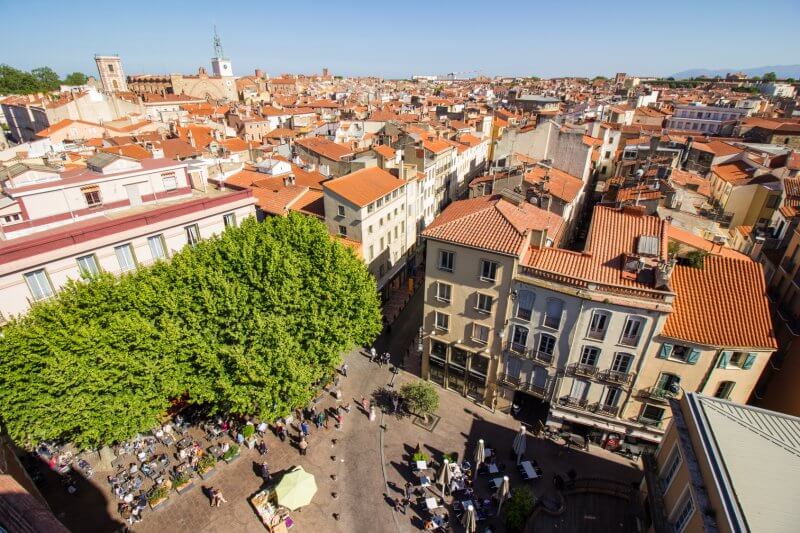Perpignan, France is a small, beautiful city on the Cote d’Azur where you can spend a great weekend. It is famous for its interesting centuries-old history, picturesque nature and friendly atmosphere. And, despite the fact that the local attractions can be counted on your fingers, there is something to see here.
General information
The city of Perpignan in France is a picturesque Mediterranean resort located on the banks of the Tete River, 32 km from the Spanish border (southern part of the country). The first mention of this place dates back to 927. Over the long history of its existence, the settlement has managed to visit the residence of the Pope himself and change several “owners”. It is for this reason that Perpignan can not be called a purely French resort-it also feels the influence of the culture of Spain and Catalonia.
The area of the city is 68 km. sq. m. The population is up to 120 thousand people. The ethnic composition is quite diverse, but the main part is represented by French, Spanish and Catalans who fled across the border during the Civil War.
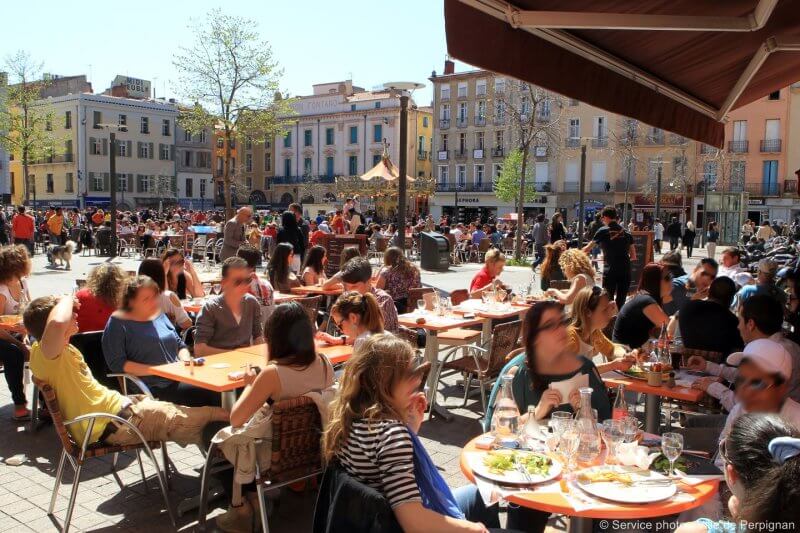
Local residents are engaged in tourism and wine production. The fact is that the city is located in a fertile plain, on the territory of which grapes have been grown since ancient times. Leaving here without a bottle of good wine is simply impossible!
Studying photos of Perpignan in France in tourist avenues, you can easily see that it is quite cozy and even provincial. Its best part is the La Bassa promenade, surrounded by two tiers of green spaces. The pedestrian path is lined with tall, shady chestnuts, and below, near the river, roses and rosemary bloom.
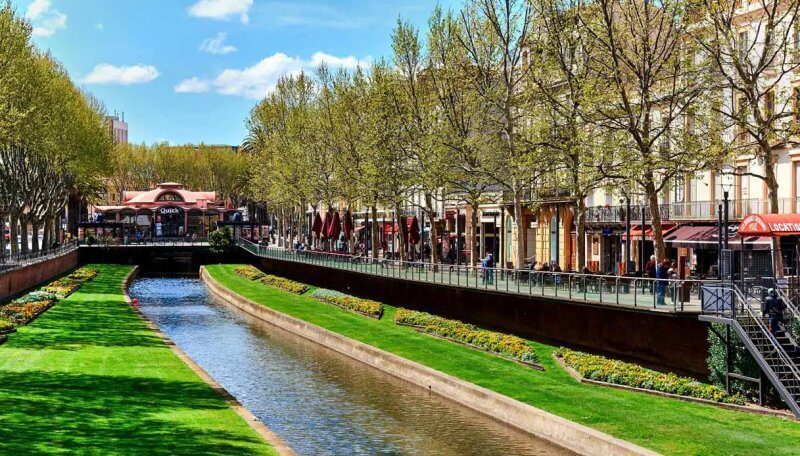
No less interesting for tourists is the Old Town with a large Cathedral with neat narrow streets.
The climate in Perpignan is typically Mediterranean. Summers are hot, dry, and virtually rainless. Winter – mild, not frosty, sometimes even with snow. In winter and early spring, the area is dominated by winds that reach incredible strength. True, this is only the case by the sea, which is 14 km from the center. In the city itself, however, it is less windy.
Modern Perpignan is a good choice for a private trip or a short stop along the coast. It has plenty of free parking and affordable hotels, and is very close to the international highway connecting France and Spain.
Places of interest in Perpignan
What to see in Perpignan? The city has a rich historical, cultural and architectural heritage. Many of the local monuments are listed in the register of “Heritage of the twentieth century” and are considered the most important sights not only in the region, but also in the whole of France.
The Palms Hotel
The Hotel Pams is a historic building built in the second half of the 19th century on the initiative of Pierre Bardoux. At that time, it housed the JOB cigarette paper factory and the founder’s residence. After his death, the building passed to the son-in-law of the tycoon Jules Pams, a well-known French politician and a great connoisseur of art. It was during his time that the former factory turned into an elegant private mansion, which architect Leopold Carlier worked on the appearance of. In the design of the building, you can trace elements of Art Nouveau, the symbolism of the JOB brand and references to the Vermeil coast, where Pams was originally from.
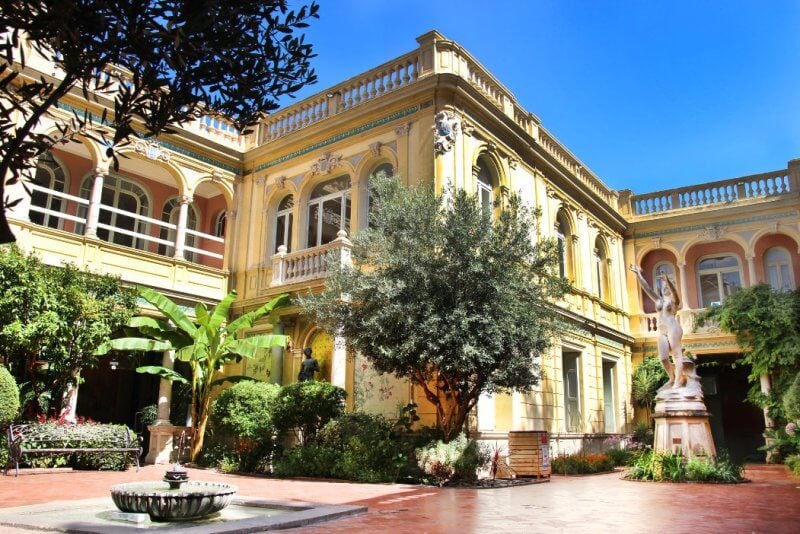
Now the Hotel Pams is a popular museum with a picturesque courtyard, magnificent interior decoration, an exquisite grand staircase, Gervais paintings on the walls and original sculptural panels.
- Address: 18, Rue Emile Zola 66000 Perpignan, France.
- Opening hours: October 1-May 31-Tue – – sun. from 11: 00 to 17: 30, June 1-September 30-daily from 10: 30 to 18: 30.
- Admission is free.
- Official website: www.mairie-perpignan.fr/actualites/la-ville-de-perpignan-vous-fait-decouvrir-son-patrimoine-lhotel-pams.
Saint-Jean Cathedral
Looking at the photo of Perpignan, it is impossible not to notice the Roman Catholic Cathedrale St-Jean, dedicated to St. John the Baptist. The cathedral, whose construction began in 1324, and was completed only at the end of the 15th century, is known throughout the country. Moreover, today it has been completely restored and even entered in the register of national monuments of France.
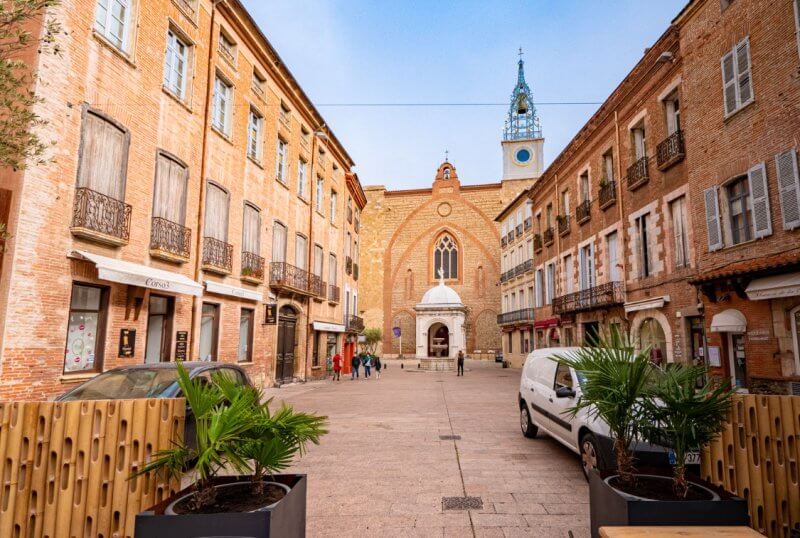
The building is decorated in the Gothic style-it has a huge nave, a very short transept and a vault of seven keys. Unfortunately, the western facade of the cathedral was never finished. What we see now is the result of repairs. But on the remaining walls, the portico and the clock tower of the 18th century are perfectly preserved. Another unusual element of this attraction is the tuned bells of Amede Bolle.
- Address: 1 Rue de l’Horloge, 66000 Perpignan, France.
- Opening hours: daily from 08: 00 to 17: 00.
- Official website: perpignan.catholique.fr.
Castillet Fortress and Museum
Le Castillet is a high picturesque tower from the 14th century, the main symbol of Perpignan, the entrance to the historical center. It is very easy to find it. The tower is located on the banks of the Tet River and is part of the architectural ensemble of the Royal Palace. The place is very popular: here you can see ancient hinged loopholes, beautiful ballrooms, unusual hiding places. Casa Peral, the Museum of Catalan History and Culture, also occupies several floors of this important historical landmark. It was opened in the 60s and managed to acquire a large number of exhibits.
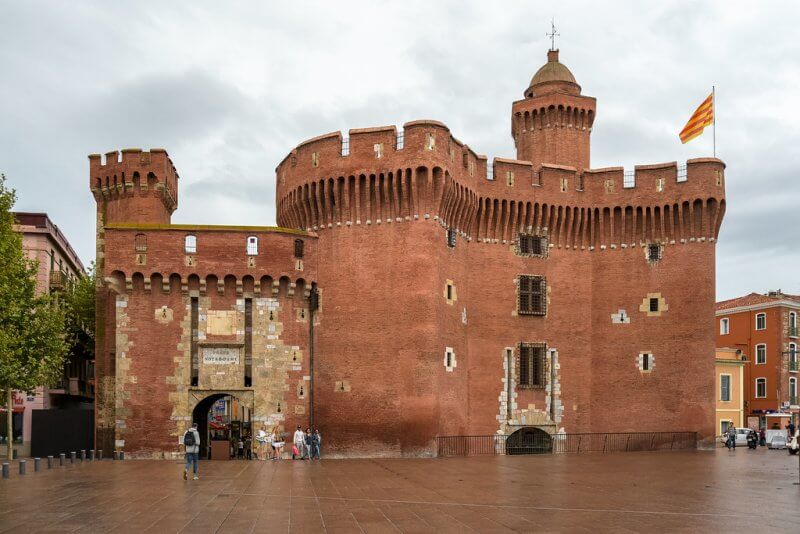
In 2014, his museography was revised and adapted to modern realities. Now there are not only exhibitions, but also a multimedia space. In addition, various cultural, political, sporting and festive events are often held in the shadow of the battlements.
- Address: Le Castillet, Place de Verdun 66000 Perpignan, France.
- Opening hours: October 1-May 31: Tue – – Sun. from 11: 00 to 17: 30; June 1-September 30: daily from 10: 30 to 18: 30.
- Weekends – May 1, January 1, December 25.
- Official website: www.mairie-perpignan.fr.
Palace of the Kings of Majorca
The Palais des rois de Majorque is a medieval palace built in the city center during the time of the Kingdom of Majorca. Decorated in the Gothic style, a little later converted into a fortress with a powerful surrounding wall. The castle stands on a hill, from the top of which you can enjoy a beautiful panorama of the city. During a walk through the surrounding area and a tour of the halls, you will discover the history of the region, enjoy the view of traditional houses with bright roofs and fully experience the southern French flavor.
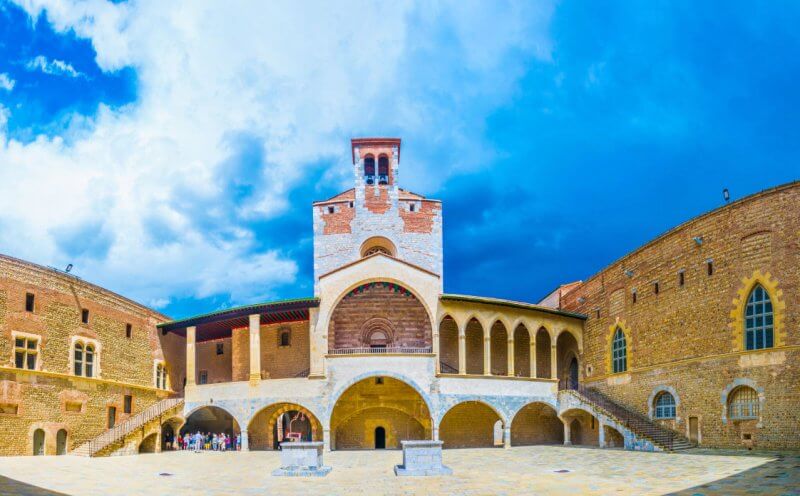
The courtyard of the palace deserves no less attention – it is perfectly preserved. On the territory of a huge patio there is a throne room, a tower-donjon, the king’s apartments and a chapel consisting of 2 parts. The upper one was built in honor of St. John the Baptist. Cross, lower – St. Magdalene. But the interior decoration can not please with variety – there is little left in it.
- Address: Rue des Archers, 66000 Perpignan, France.
- Opening hours: daily from 09: 30 to 18: 30.
Hyacinth Rigaud Art Museum
Musée d’art Hyacinthe Rigaud is a famous city museum located in the building of the old local university. The official date of its foundation is considered to be 1820, but the institution was opened to the general public only after 13 years. The first museum collection consisted of about 30 paintings, received as a gift from local collectors or bought at auction.
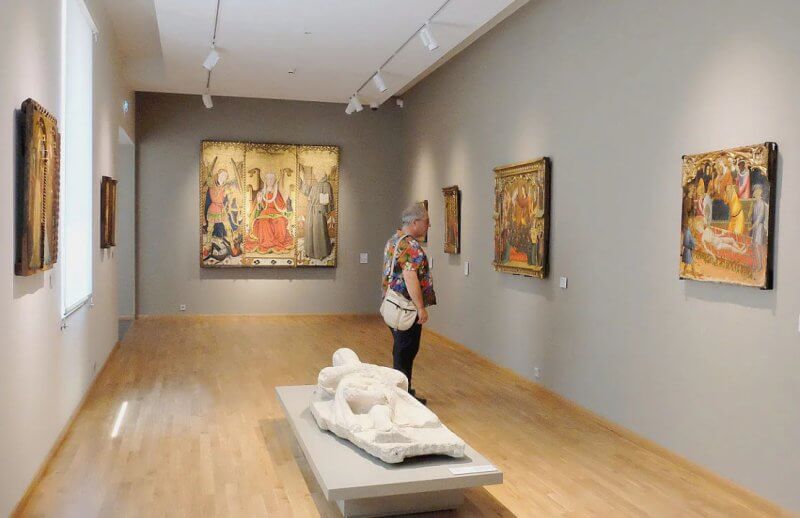
Now the collection of the Museum of Fine Arts has many unique exhibits, and the annual number of visitors reaches 70 thousand people a year. Among the exhibits stored here are sculptures, objects of decorative and applied art and paintings by famous world artists-Hyacinth Rigaud, Pablo Picasso, Aristide Maillol, etc.
- Address: 21 Rue Mailly, 66000 Perpignan, France.
- Opening hours: daily from 10: 30 to 19: 00.
- Official website: www.musee-rigaud.fr.
Monastery Couvent des Minimes de Perpignan
Another well-known landmark of Perpignan is the Monastery of the Minims, built in 1493 in the old Jewish quarter. It all started with a small church, to which a monastery was added a hundred years later. The result is an impressive brick structure, which is well preserved. The cathedral’s vaults are 25 m long and 11 m wide. Inside, it consists of 3 separate portals. One of them, the main one, is located on the south wall. The second one goes to the cloister, and the third one – to the street. In the corner of this ensemble, you can see an ancient staircase, which in former times led to the living quarters.
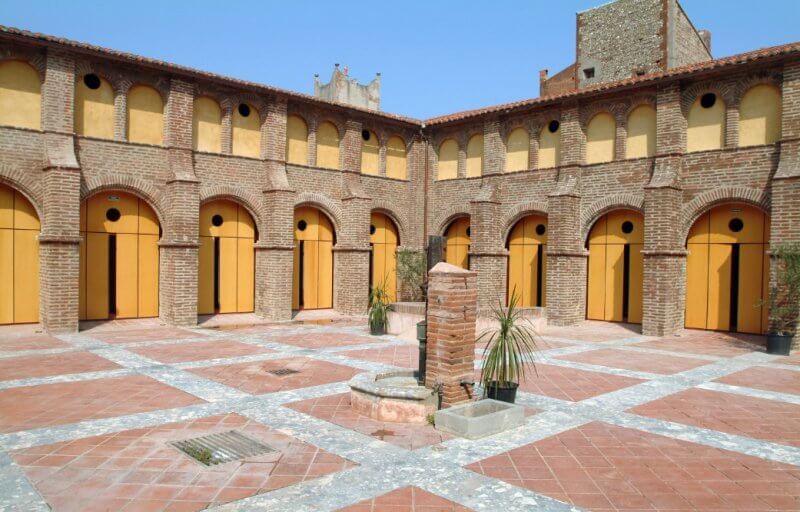
Since its foundation, the Couvent des Minimes de Perpignan has hosted various religious and non-religious organizations, including the French army, which turned monastic cells into soldiers ‘ barracks. Now it hosts various festivals, exhibitions and other cultural events.
- Address: 12 Rue Louis Bausil, 66000 Perpignan, France.
- Opening hours: daily from 10: 30 to 18: 00.
- Website: https://www.perpignantourisme.com/decouvrir/voir-faire/monuments/couvent-minimes.
Where to stay?
The city of Perpignan has plenty of places to stay. These are mostly cozy three-and four-star hotels. You can also rent an apartment or apartments. Unfortunately, there are no 5* hotels here. If you want something quite extraordinary, rent a house from local farmers. However, most tourists prefer to stay in the center. It’s beautiful, close to shops, bus stops, and major city attractions. In addition, it is in this part of the resort that all cultural events are held in the summer.

The only drawback is noise, so less crowded neighborhoods are more suitable for lovers of silence. For example, near the university or in neighboring villages (Saint-Paul-de-Fenouillet or Saint-Esteve). But such areas as Saint-Mathieu, Vernet and Saint-Jacques are recommended to avoid – they are not quite calm.
If we talk about the cost of living, a night in a 3* double room of the hotel will cost at least 50 €. Rent of apartments and apartments starts from approximately the same amount. 4* hotels are more expensive – their price tag starts from 85 €. The most budget hotels are considered to be without stars-from 40 €.
Public transport links
Perpignan has a well-developed transport connection. It is easily accessible from other cities in France and various European countries. There are 3 ways to do this.
Method 1. By plane
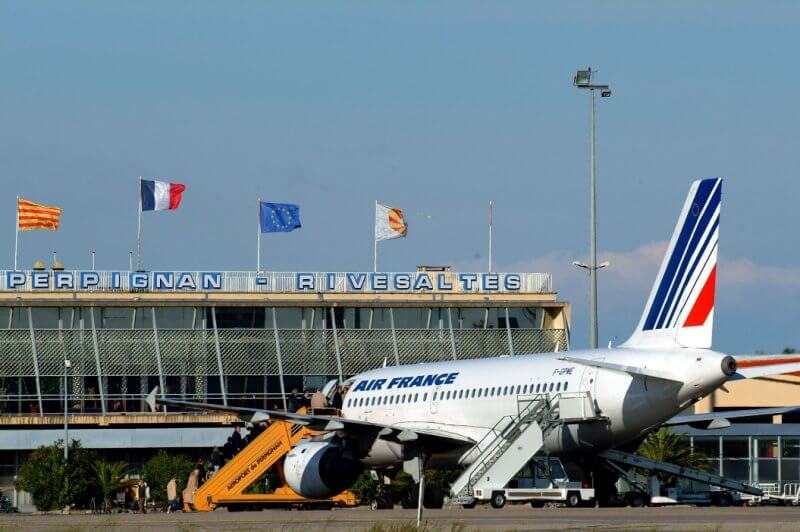
Aéroport de Perpignan-Rivesaltes is located near the city and offers domestic and international flights to a variety of destinations. Among them, it is worth noting:
- Nantes;
- Calvi;
- Paris;
- Lille;
- Southampton;
- Oran;
- Ajaccio;
- Dublin;
- Stansted;
- Birmingham;
- Marrakech;
- Brussels;
- Amsterdam;
- London.
There is a regular bus service from the airport to the city center. Travel costs €4.50. Please also note that some flights do not operate all year round, but only during certain periods.
On a note! Flights from Spain are also available at Girona Airport, located 94 km from Perpignan.
Method 2. By train
The city has a railway station served by several transport companies at once:
- TGV-high-speed trains that run to Paris (Gare de Lyon), Barcelona and Toulouse. On weekends, there are flights to Belgium (via Lyon and Lille to Brussels);
- AVE – daily connections from Perpignan to Marseille, Lyon, Madrid and Barcelona;
- Intercity-overnight trains to Paris (Gare d’Austerlitz and Gare de Lyon), via Toulouse. During the high tourist season, they run daily, the rest of the time-only on certain days;
- TER – regional trains leaving for Montpellier, Toulouse, Narbonne, Marseille, Carcassonne, Bordeaux, Nice (there are a lot of flights per day).
Thanks to two major lines (the new high-speed Perpignan – Barcelona and Narbonne-Port-Bou), the city is one of the most important points of railway communication between France and Spain.
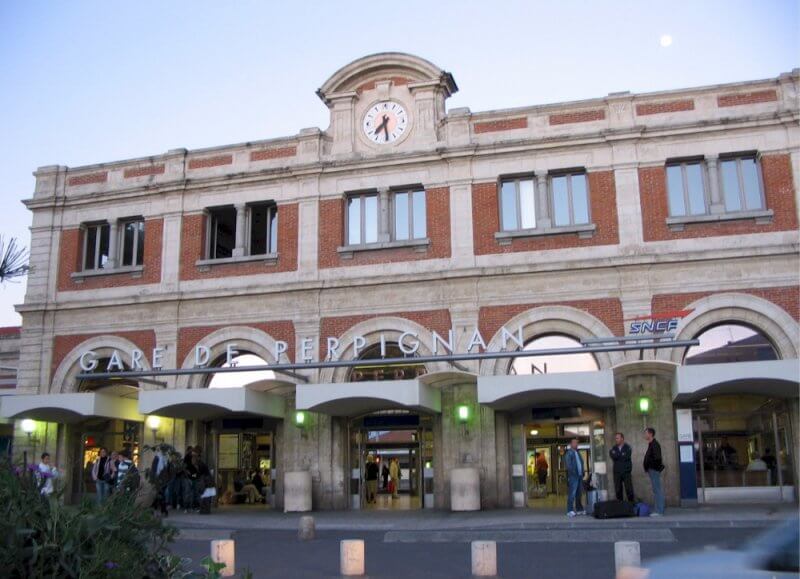
It is easy to find the station-it is located in the center at 1 place Salvador Dali. Second-class fares range from €50 to € 150. Tickets are sold at ticket offices, terminals, and via the Internet (you must print them out at any time before traveling). To save some money, do it in advance. In addition, pay attention to discounts for different age categories. You can find out the schedule, the exact cost of the trip and book a ticket on the official website of SNCF.
Method 3. By bus
Bus services to Perpignan are provided by Sankéo and Euroligne. The latter travel throughout Europe and provide a bus service to the French resort with the Czech Republic, Italy, Spain, the Netherlands, Morocco, Belgium and Germany. Travel will be cheaper than by train, but children under the age of 16 can only travel when accompanied by an adult (parent or guardian). You will also need a visa when crossing the French border. The Euroligne bus stop is located opposite the local train station at 12 boulevard saint Assiscle.
Interesting facts
There are many other interesting things to tell about the city of Perpignan, France. Let’s focus only on the most interesting facts:
- The famous French resort is so closely connected to neighboring Spain that almost all shops are closed for siesta, many locals speak Catalan, and there is a huge amount of Spanish dishes in the kitchen.
- Neither the Catalans nor the French understand English.
- If you come to the city by train, do not rush to leave the train station. The building so impressed Salvador Dali that he captured it in his fantastic 3D painting.
- It was here that King Philip III of France died, returning home after an unsuccessful crusade against the Aragonese crown.

